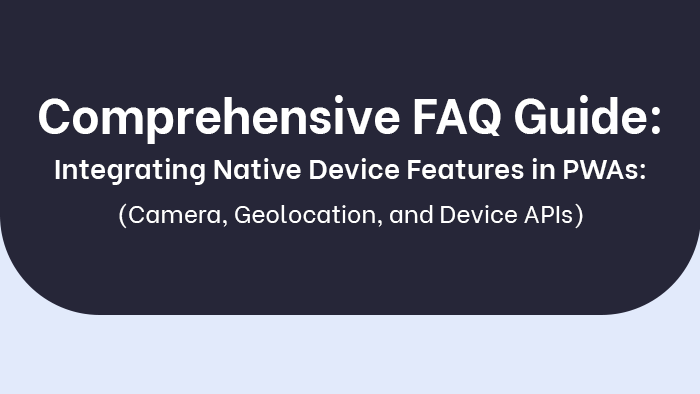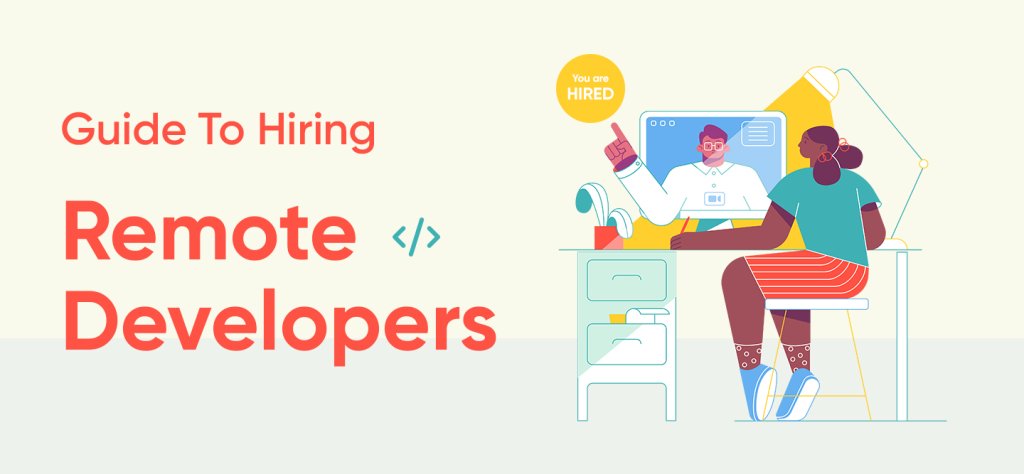
Are you looking to hire a remote developer but don’t know where to start? Look no further! This guide will provide all the information you need to ensure that your remote developer hiring process is successful.
As businesses are becoming increasingly dynamic, having access to talented professionals from around the world has become an invaluable asset. With this in mind, it’s important to understand what goes into finding and hiring great remote developers who can bolster your company’s success and growth.
This guide will take you through each step of the process so that you leave with confidence knowing that you have found the perfect fit for your business needs. From setting job descriptions, screening applicants, and negotiating contracts, we’ll make sure there’s nothing left out as you embark on this exciting journey towards bringing innovation into your organization.
Defining Remote Work
Remote work is becoming increasingly commonplace as businesses strive to stay competitive in a digital age. With the right remote working parameters and expectations, organizations can successfully hire and manage remote developers with ease. The key to successful remote work lies in setting clear guidelines regarding policies and agreements that both sides must abide by.
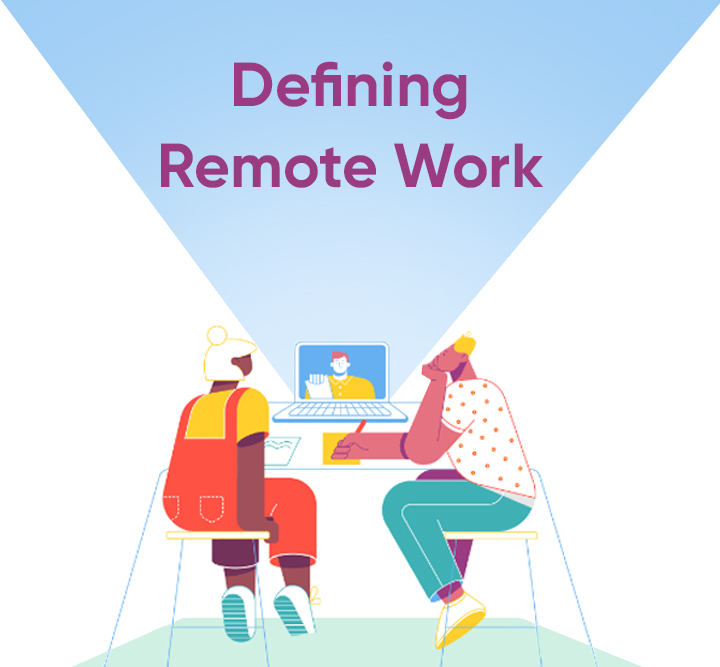
Creating a detailedremote work policy will help ensure that all parties understand their respective obligations from the outset of the relationship. This document should include details such as hours, communication protocols, meetings, deadlines, deliverables, payment terms, collaboration tools and more. Having these points established upfront serves as an important reference for subsequent interactions between employers and employees alike.
It’s also crucial to have a remote work agreement outlining the mutual understanding between employer and employee about how the job will be performed remotely. Such an agreement should specify what each party is responsible for along with any additional requirements or limitations on either side. By presenting this information clearly, potential misunderstandings down the line can be avoided altogether – thus ensuring everyone involved is satisfied with the arrangement. Benefits of hiring remote developers are discussed next…
Benefits Of Hiring Remote Developers
Recruiting and managing remote developers has a number of advantages that can benefit your organization. From cost savings to improved productivity, virtual developer teams offer an array of benefits you won’t find with traditional in-house development staff.
With the right tools, hiring and working with remote developers is no more difficult than recruiting local talent. While it may take some time to get used to different communication platforms and processes, once established, you’ll be able to create efficient virtual developer teams that are just as capable as any onsite team. Cost savings from not having to provide office space for each remote worker make up for additional costs like setting up secure networks or providing tech support. Additionally, many countries have lower wages for software engineers which can translate into big savings when assembling a remote development team.
Having distributed teams also opens up access to top global talent who might otherwise be unavailable due to geographical restrictions or language barriers. Moreover, by utilizing the skillsets available across multiple locations, organizations can take advantage of increased collaboration between workers while reducing their overall expenses. In addition to these monetary benefits, research shows that remote developers tend to work better independently and demonstrate higher levels of job satisfaction compared to those in-office counterparts — leading to greater focus on tasks at hand, fewer distractions, and higher productivity levels over time.

The potential gains are great but there are challenges associated with hiring and managing remotely located developers too. To ensure successful outcomes…
Challenges Of Hiring Remote Developers
Sourcing skilled software developers for remote positions presents unique challenges. Recruiters must overcome the obstacles of remote hiring, recruitment, collaboration, onboarding and monitoring to attract great talent.
First and foremost, companies must ensure they offer a competitive salary or hourly rate that meets industry standards; otherwise, it can be difficult to hire talented professionals from afar. Remote recruiters may also need to consider other factors such as additional benefits like flexible hours or vacation packages when luring top-notch candidates. Alternatively, using current employees’ referrals and expanding into untapped talent pools can help uncover exceptional prospects who are willing to work remotely at lower costs.
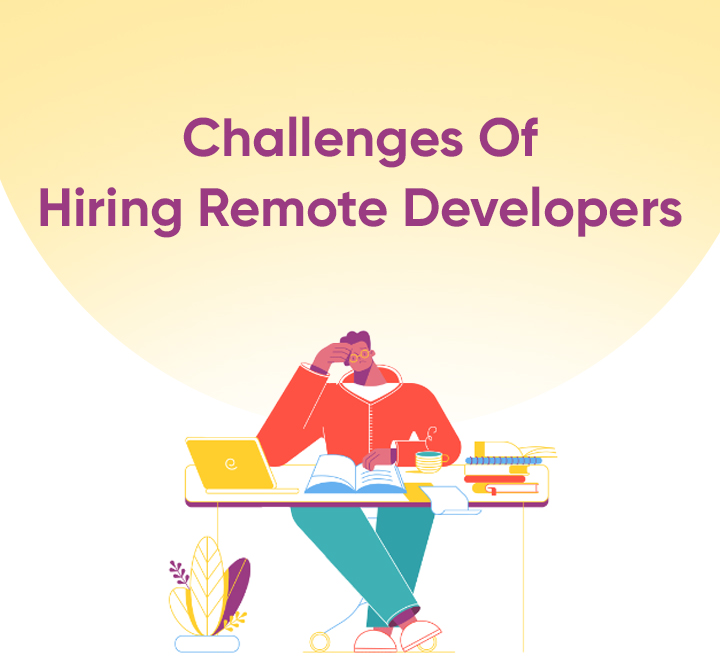
To maintain productivity with a dispersed team, employers should invest in various tools designed specifically for managing remote teams effectively while keeping collaborations seamless and efficient. The right technology solutions allow supervisors to monitor performance closely without having an onsite presence all the time. Additionally, HR departments should focus their efforts on strengthening relationships with faraway coworkers by offering more personalized onboarding processes than those offered for in-house staff members.
By being mindful of these hurdles associated with staffing a virtual workforce, businesses have greater chances of recruiting ideal outsourced software engineers from any location around the world.
Tips For Recruiting Remote Developers
Now that you understand the challenges of hiring remote developers, it’s time to look at tips for successful recruitment. First and foremost, remote developer onboarding is an important part of any remote developer hiring process. It should include setting expectations upfront with clear guidelines on how communication will take place, project timelines and delivery dates, goals, performance reviews and more. Additionally, having a structured approach to managing remote developers can help ensure projects are completed successfully within the desired timeframe.
Creating a comprehensive job description is key in helping to attract quality candidates during your remote developer recruitment efforts. Detailed descriptions should include qualifications needed for the role as well as core responsibilities to set realistic expectations from both parties. You also want to make sure you’re communicating what makes working remotely appealing so potential applicants better understand why they should apply for the position.
Finally, reviewing CVs and portfolios is one way to get a better understanding of each applicant’s experience level and skill-set before making final decisions about who to hire. Use this step in your recruitment process to assess if their skills match up with those outlined in your job description or if there are areas where additional training may be necessary once an individual has been selected for the position. With thoughtful vetting of prospective hires through these steps, you can ensure you’re finding the best candidate possible for your team — no matter where they happen to be located!
Reviewing Cvs And Portfolios
Reviewing CVs and portfolios of remote developers is a task that requires remarkable precision. It’s like you are uncovering the hidden gems! Carefully evaluating these documents can help to find the perfect fit for your team in no time.
Your remote hiring strategy should include scanning through CVs and portfolios when looking for potential candidates. As an employer, it’s important to keep an open mind about the type of work experience applicants have had as there might be some valuable skills you didn’t think would apply to the job at hand. Plus, considering different types of experiences will provide greater diversity on your team.
When reviewing CVs and Portfolios, focus on technical abilities as much as soft skills such as communication, collaboration, problem-solving, etc. This way, you’ll gain a clear idea of whether or not they have what it takes to excel with your project. Additionally, don’t forget to check out their portfolio pieces too; this will give you an insight into how creative they are and if they’re able to produce high quality results within deadlines.
By taking all these factors into account while selecting a remote developer, you’ll end up with an ideal match who adds real value to your business – one step closer to achieving success! Now let’s explore the interview process for remote developers…
Interview Process For Remote Developers
Now that you’ve reviewed and shortlisted CVs and portfolios, it’s time to move on to the interview process for remote developers. Interviewing is an important part of any hiring process because it gives employers a chance to assess skills, traits, and personalities – all critical pieces in finding the right fit. Here are some tips for interviewing remote developers:
- Start with a comprehensive job description. A clear understanding of the role requirements is key when interviewing candidates so they know exactly what they’re getting into if hired.
- Ask targeted questions related to the position being filled. This will help ensure that each candidate’s answers can be accurately compared against other applicants as well as give employers insight into how someone might perform in their new role.
- Make sure to ask follow-up questions based on answers from previous ones. It’s essential to get more information about specific topics or situations during the interview, so don’t forget to probe deeper if necessary!
Interviewing potential hires helps narrow down your list of qualified candidates and ultimately leads you closer towards making a decision about who should fill the position. Remember that interviews are designed not only for determining technical abilities but also for assessing cultural fit; take this opportunity seriously by preparing thoroughly before diving in headfirst! With these tips in mind, you’ll be able set up successful interviews with remote developers and find just the right person for your team.
Onward now to evaluating technical tests and assignments…
Technical Tests And Assignments
When it comes to hiring remote developers, technical tests and assignments are key elements of the process. They provide a great deal of insight into how well an individual would perform in a collaborative environment. It’s important to remember that these tests should go beyond simply assessing knowledge or skills; they should be designed to evaluate problem-solving abilities, communication capabilities, and creativity as well.
Anecdotally speaking, we once hired a developer who had excellent coding skills but was unable to think creatively within constraints for certain tasks. After running some additional technical tests and assigning him more challenging projects, however, we quickly realized his full potential — he ended up becoming one of our most successful hires! This experience illustrates just how valuable technical assessments can be when evaluating potential candidates.
Overall, every part of the remote development hiring process is essential if you want to find the best possible talent. Incorporating some type of test or assignment into your recruitment strategy will help ensure that each candidate has sufficient knowledge and skills required for the role while also allowing you to assess their ability to work effectively in a virtual setting. By doing so, you’ll create a team capable of driving innovation forward with increased productivity and success. Onboarding new team members then becomes significantly easier as everyone starts from the same baseline understanding.
Onboarding New Team Members
Onboarding new team members is an essential part of setting up a successful remote working process. As you begin to hire and onboard more remote employees, it’s important to create strong processes for assimilating them into the organization quickly and effectively. Remote onboarding should cover all aspects of your business operations as well as provide guidance on how to work with other remote workers in a collaborative environment.
To ensure that new team members feel welcome, start by introducing them to their teammates through video conferencing or another digital platform. This will help build trust and establish relationships from the get-go, creating a sense of community even though everyone isn’t physically present. Additionally, send out materials like employee handbooks and company policies before they join so they can familiarize themselves with what’s expected during their time at the organization.
It’s also vital to communicate expectations clearly right away regarding deadlines, communication methods and tools, organizational structure, etc., so that there are no surprises later on down the road when it comes to collaboration among new team members and existing ones alike. By taking these steps upfront, you’ll ensure smooth transitions for everyone involved in your remote working process and foster a culture where innovation thrives!
With this foundation set in place, you’re now ready to move onto establishing a collaborative working environment across teams — both local and remote — while maintaining productivity levels throughout your entire workforce.
Establishing Collaborative Working Environment
When hiring remote developers, it’s important to establish a collaborative working environment. To do this, you must focus on providing your remote teams with the necessary tools for virtual collaboration and creating effective remote workflows.
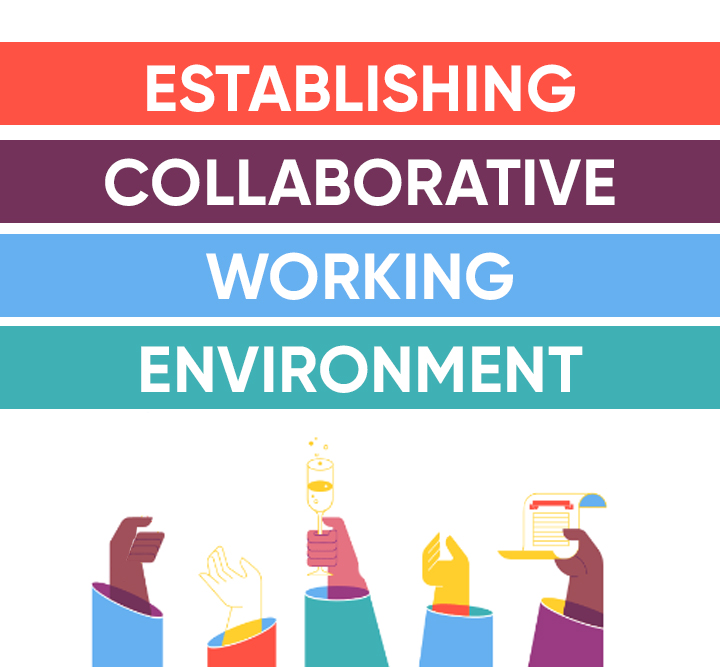
It is essential that communication between team members remains clear and concise in order to ensure progress and productivity of the project. In addition to having reliable internet access and video conferencing capabilities, there are numerous other digital tools available to facilitate better remote communication. These could include task-management apps, cloud storage platforms, chat rooms and group messaging systems. With these tools at your disposal, all members of the team should be able to share documents, assign tasks and discuss ideas without any disruptions or delays due to geographical boundaries.
Lastly, don’t underestimate the importance of maintaining an open dialogue with your remote workers even when they’re not actively managing projects. Regular check-ins can help maintain team morale as well as provide valuable feedback about their performance.
This will ultimately lead to smoother transitions into new projects while helping build trust between employer and employee.
To monitor performance of remote developers effectively, employers need to take proactive steps towards understanding each individual’s strengths, weaknesses and goals…
Monitoring Performance Of Remote Developers
Performance monitoring of remote developers is essential for successful remote development projects. It can help ensure that all tasks are being completed on time and in the desired manner, as well as providing valuable insights into how team members interact with each other. With proper performance monitoring, organizations can quickly identify any issues or problems that arise during a project and take corrective measures to address them.
To begin tracking the performance of your remote developer team, you’ll need to establish key performance indicators (KPIs) relevant to your particular project. KPIs should include objective metrics like task completion rate, average response times for inquiries, bug fix turnaround times, code review accuracy rates and more. Once these KPIs have been established, it’s important to track them regularly via automated tools or manual reports from individual team members. This will enable you to accurately measure progress against goals and stay up-to-date on areas where improvement may be needed.

It’s also wise to monitor collaboration between teammates and assess whether they are working together effectively towards common objectives. Using an internal communication tool such as Slack helps keep conversations organized and makes it easier to pinpoint areas of weakness or misunderstanding within teams. Additionally, regular video calls between teams allow managers to observe body language cues and get a better understanding of who is taking ownership over certain tasks or processes. By keeping an eye out for potential roadblocks ahead of time, leaders can proactively intervene before they become bigger problems down the line.
Frequently Asked Questions
What Is The Best Way To Create An Effective Onboarding Process For Remote Developers?
Creating an effective onboarding process for remote developers is essential to hiring success. But how do you ensure that your remote developers are ready and set up for success? What steps should be included in the remote developer onboarding process, and what methods create a positive experience? When it comes to onboarding remote developers, there needs to be plenty of communication between the employer and employee. This includes providing detailed instructions on how to use any software or hardware necessary for their job as well as setting expectations regarding performance goals. Having clear job descriptions and project timelines can also help streamline the process. Additionally, employers need to focus on making sure new hires feel welcome by introducing them to colleagues through video calls or similar technologies. In order to create an efficient yet engaging onboarding process for remote developers, it’s important to take advantage of technology such as online training modules, automated emails, virtual meetings, and even gamification techniques if appropriate. These tools not only make the onboarding easier but will provide a more interactive learning environment than traditional methods. Employers should also consider leveraging social media platforms like Slack or Microsoft Teams so that new employees can easily collaborate with coworkers across time zones without worrying about language barriers or cultural differences. Finally, employers must also pay attention to feedback from both current and former employees in order to improve upon existing processes and identify areas where change may be needed. By taking into account all these considerations when creating a remote developer onboarding process, employers can ensure that they are providing the best possible experience for their incoming staff while still meeting business objectives. Doing so will lead to increased productivity over time due to better engagement with new hires who have already been given everything they need before beginning work – leading ultimately towards greater satisfaction among both employees and management alike!
How Do You Ensure That Remote Employees Are Meeting Deadlines?
When it comes to ensuring remote employees are meeting their deadlines, time management and deadline tracking strategies must be put in place. Without these tactics, the performance goals of both employers and employees can’t be met. Here are three ways you can ensure your remote developers stay on track: 1. Establish clear expectations: Make sure all remote employees understand what is expected of them and when each task needs to be completed before they start any project. By setting up a timeline with specific milestones, everyone will have an understanding of how much work needs to be done by certain due dates. 2. Use project management tools: Utilizing project management software or other online platforms can help keep tasks organized so that everyone knows where they stand with regards to progress on projects. This helps not only the employer but also the remote employee as well since they know exactly what has been accomplished and what still needs to be done for them meet their deadlines. 3. Provide feedback consistently: Providing timely feedback on completed tasks is important for maintaining successful communication between employers and employees, even if they’re working remotely from one another. It gives employees guidance as to how to approach future tasks and allows them to adjust their workflow accordingly so that they meet their deadlines without fail. By implementing these strategies into workplace culture, you can rest assured knowing that all team members are staying on top of their responsibilities while having access to the guidance needed for success in achieving performance goals set forth by both parties involved in the hiring process.
What Type Of Technical Assessments Should Be Given To Remote Developers?
When it comes to hiring remote developers, the technical assessment process is one of the most important steps. It can make or break your success in finding the right candidate for the job. As such, understanding what type of assessments should be given is crucial when creating an effective interviewing process and making sure that you get the best person for the role. We all know that having a good handle on technology is essential for any successful remote collaboration – but figuring out how to evaluate these skills during the hiring process isn’t always easy. The key here is to identify which technical assessments will give you meaningful information about a developer’s abilities so that you can choose someone who fits your project requirements. There are several ways to go about assessing candidates’ technical abilities, from giving them coding tests to letting them demonstrate their knowledge through portfolios or whiteboard challenges. A combination of both would be ideal as this gives recruiters more insight into each individual’s strengths and weaknesses: Coding tests measure problem-solving ability by asking applicants to debug code or write solutions under time constraints; Portfolios provide an overview of previous projects they have worked on and show off their creativity; Whiteboard challenges allow developers to walk recruiters through their thought processes while solving problems with pencil and paper. These assessments help employers understand where people stand skill-wise and determine whether they’re a good fit for the position—which makes it easier for everyone involved in terms of selecting suitable candidates quickly and accurately. In summary, conducting proper technical assessments before taking on new hires can save companies time, money and effort down the line – ensuring productivity levels remain high!
How Can You Build Trust And Collaboration When Working With Remote Developers?
When it comes to remote development teams, building trust and collaboration is essential for success. It’s not always easy to know how best to achieve that when working with people who are offsite or in different timezones. Fortunately, there are a few key strategies you can use to develop strong relationships among your remote developers: Start by encouraging open communication from the beginning of any project; this will help build mutual respect between team members. Be sure to stay engaged throughout the process—check-in regularly with each developer and respond promptly to their questions and concerns. Foster an environment where everyone feels comfortable sharing ideas and feedback without fear of judgment or criticism. Utilize technology such as video conferencing platforms or group chat services so that all team members have an equal opportunity to contribute their thoughts and opinions during meetings. Set up regular “virtual watercooler conversations” so everyone can take breaks, get caught up on what’s going on outside the office, and just connect on a more personal level. These steps are important for creating a healthy remote working relationship from day one. Establishing strong ties among your remote development team sets them up for success – both individually and collectively – giving them the confidence they need to tackle new challenges together. This also allows them to better understand each other’s strengths and weaknesses, which is invaluable for collaboration down the line. By investing in these practices early on, you can ensure that your remote development team has everything they need to create something amazing!
What Are The Best Practices For Interviewing Remote Developers?
Have you ever considered hiring remote developers, but don’t know where to start? Interviewing a developer remotely can be daunting. To make sure the process goes as smoothly and efficiently as possible, it’s important to understand best practices for interviewing remote developers. The key is to create an environment where both parties feel comfortable throughout the process. Here are some tips on how to interview remote developers successfully: Invest in technology that allows for seamless communication between both parties such as video conferencing tools or screen sharing software. Have clear expectations about what skills and experience the candidate should possess before the interview begins so there’s no confusion during the conversation. Don’t forget to ask questions that give insight into the candidate’s personality and cultural fit with your team or organization. Make sure everyone involved knows their roles and responsibilities ahead of time so they’re prepared when it comes time for the actual interview. By following these steps, you can ensure that your remote developer interviews run smoothly and effectively while also fostering trust between all participants – which is essential when working with remote teams! Additionally, having realistic expectations from the start will help you identify potential red flags before bringing someone onto your team permanently. Lastly, making sure everyone has access to necessary resources (such as reliable internet connection) prior to starting any type of virtual interaction will go a long way towards creating a positive overall experience for all involved.
Conclusion
The process of hiring remote developers can be a daunting task, but it doesn’t have to be. With the right onboarding process, technical assessments and interviewing practices, you will be able to find the perfect fit for your development team.
Creating trust and collaboration are vital components when it comes to working with remote employees; establishing consistent communication and setting expectations from the get-go is key in ensuring that deadlines are met. You should also consider giving technical assessments to ensure that potential candidates possess the skills needed for success.
To sum up, recruiting remote developers isn’t as intimidating as it may initially seem – if you approach it like ‘piecing together a puzzle’, making sure each piece fits perfectly before putting them all together at once, then you’re on your way to finding the ideal developer! So don’t let uncertainty cloud your judgement – take these tips into account and recruit confidently knowing that your new hire is going to bring energy and innovation like a ray of sunshine into your business.

